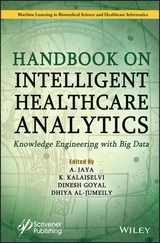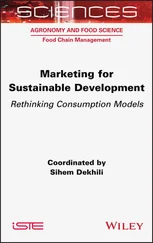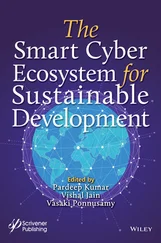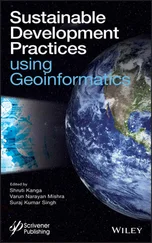Handbook of Intelligent Computing and Optimization for Sustainable Development
Здесь есть возможность читать онлайн «Handbook of Intelligent Computing and Optimization for Sustainable Development» — ознакомительный отрывок электронной книги совершенно бесплатно, а после прочтения отрывка купить полную версию. В некоторых случаях можно слушать аудио, скачать через торрент в формате fb2 и присутствует краткое содержание. Жанр: unrecognised, на английском языке. Описание произведения, (предисловие) а так же отзывы посетителей доступны на портале библиотеки ЛибКат.
- Название:Handbook of Intelligent Computing and Optimization for Sustainable Development
- Автор:
- Жанр:
- Год:неизвестен
- ISBN:нет данных
- Рейтинг книги:5 / 5. Голосов: 1
-
Избранное:Добавить в избранное
- Отзывы:
-
Ваша оценка:
- 100
- 1
- 2
- 3
- 4
- 5
Handbook of Intelligent Computing and Optimization for Sustainable Development: краткое содержание, описание и аннотация
Предлагаем к чтению аннотацию, описание, краткое содержание или предисловие (зависит от того, что написал сам автор книги «Handbook of Intelligent Computing and Optimization for Sustainable Development»). Если вы не нашли необходимую информацию о книге — напишите в комментариях, мы постараемся отыскать её.
This book provides a comprehensive overview of the latest breakthroughs and recent progress in sustainable intelligent computing technologies, applications, and optimization techniques across various industries.
Audience Handbook of Intelligent Computing and Optimization for Sustainable Development
Handbook of Intelligent Computing and Optimization for Sustainable Development — читать онлайн ознакомительный отрывок
Ниже представлен текст книги, разбитый по страницам. Система сохранения места последней прочитанной страницы, позволяет с удобством читать онлайн бесплатно книгу «Handbook of Intelligent Computing and Optimization for Sustainable Development», без необходимости каждый раз заново искать на чём Вы остановились. Поставьте закладку, и сможете в любой момент перейти на страницу, на которой закончили чтение.
Интервал:
Закладка:
Chapter 14proposes a framework for sentiment analysis of twitter data. The authors measured tweets posted by users in the format of hashtags (#) to state their belief about existing trends. Basically, the sentiment of tweets was investigated using Google Cloud Platform, BigQuery, and Google App Engine. Word intellect recapitulation and WordNet sign inputs were used to amplify the precision. Later, with the help of a classification method, information or data was segregated in the form of positive, negative and neutral. Significant insights are acquired by data visualization. The sentiment analysis was executed based on the ranking produced.
Chapter 15explores the applications of topic modeling in research. The authors found that applying topic models on various applications is helpful in scientific research. With the help of topic modeling, we can generate topics that are really useful and interesting in an automated way. The literature survey shows that latent dirichlet allocation (LDA) is widely used in text analysis. Social networks are also mainly involvedin this field of text analysis. The use and applications of topic modeling research discussed in this chapter can be a significant source for text mining research, with topic modeling based on popular techniques for researchers in future works.
Part II: Optimization
Chapter 16provides a comparison of the performance of four machine learning algorithms—Naïve Bayes, Neural Network, Support Vector Machine, and K-nearest Neighbors—in spam classification. The implementation of the algorithms is carried out in R and performance is evaluated by using AUC of the ROC curve, Accuracy, Kappa, and F-Measure. The results revealed that the SVM algorithm performed better than the other algorithms. This work showed that the receiver operating curve–area under the curve (ROC-AUC) is better suited for use in the machine learning world when compared to the accuracy metrics which are generally used in assessing the performance measurement of a classification algorithm.
Chapter 17deals with an inventory system where urea bags of varying bulk sizes arrive at the warehouse, in which the arrivals follow the Poisson process and the inter arrival times follow exponential distribution. Probability distribution of inventory levels and total expected cost per unit time are obtained, supported with numerical calculations and graphical representations.
Chapter 18represents a single-objective prototype for supply chain optimization considering disruption scenarios. The goal is to lessen the amount of the setup cost, shipping cost, production price, inventory expense, purchasing cost and scenario cost. A mixed integer linear programming model is developed which as a result of multiple entities is complex. The intention is to find a solution to such a model by developing a solver with the intent of providing a comparative study with different evolutionary approaches and numerical methods like branch and bound.
Chapter 19studies the tax risk profile of South African construction companies, which is characterized by the book value, cash flow position, headcount, firm earnings, debt size and type of firm. The model that defines this tax risk is a neural network (NN) boosted generalized linear model (GLM). The main aim of this study was to develop an artificially intelligent pricing model. The study, which was conducted using an examination of financial statements of construction companies, highlights the key determinants of the price of tax risk for construction firms. Modeling techniques used to build the pricing model are discussed in detail along with their challenges.
Chapter 20proposes a design of a simplified Type-A Schiffman phase shifter (SPS) based on microstrip transmission line (TL) technology. This phase shifter (PS) is designed to obtain a phase shift of 90 degrees at the resonance frequency. In this design, the stub matching technique is employed to match the impedance. This design is tunable, thereby obtaining a phase shift from 45 to 90 degrees with a phase deviation of 5 degrees in the resonance frequency of 2.4GHz. A varactordiode is introduced to make the design tunable. The design is carried out using the FR4 substrate, with an operating frequency of 2.4GHz. An IE3D full-wave simulation platform is used for simulation purposes.
Chapter 21explores manufacturing competencies and sustainability issues for automobile manufacturing companies. The work is based on organizations in north Indian automobile and auto parts manufacturing companies, with various manufacturers being treated alike irrespective of the manufacturing sector. A qualitative model was developed for depicting competency and strategy relation. The research provided an insight into manufacturing competencies and their relation tostrategic success; it also discovered areas that could be improved with further research.
Chapter 22creates a nonlinear continuous review inventory model for multiple products considering the quantity of the products received as uncertain with controllable lead time. The solution of the model was discussed with and without considering service level constraint. The Lagrangian method is applied for the model with service level constraints and an optimal solution is arrived at.
Part III: Metaheuristics – Applications and Innovations
Chapter 23proposes a completely innovative metaheuristic optimization algorithm. This new method was inspired by the circular structures on the seafloor which are created by one of the pufferfish species ( Torquigeneralbomaculosus ). The basic parameters of the inventive method were determined by the parameters observed during the process of the circular structure of the pufferfish. The process of performing this natural phenomenon is detailed in this work. In addition, detailed information about the concept of optimization, development process and activity areas are given in the study. The performance of this proposed method, which is inspired by nature, has been compared with other methods used extensively in the literature.
Chapter 24proposes a hybrid optimization approach called HGWOSSO based on the integration of two swarm-based approaches, namely grey wolf optimizer (GWO) and sperm swarm optimization (SSO). The aim ofthis hybridization is to merge and enhance the capabilities of exploitation and exploration in both SSO and GWO to generate both in varied strengths. The functions of fixed-dimension multimodal, multimodal, and unimodal benchmarks gleaned from the literature are utilized to check the solution quality and performance of the HGWOSSO variant. The results revealed that the local search in SSO increases the ability of the hybrid variant in solving the benchmark functions, which significantly outperforms the GWO variant in terms of quality of solutions and capability of reaching the global optimum.
Chapter 25envisions accessible lines of research associated with metaheuristics and highlights less explored areas of considerable concern. The authors concentrate on other metaheuristic approaches, hybrid processes, parallel metaheuristics, metaheuristics under uncertainty and multi-objective optimization. A review of these methods shows that while they are linked to several works, they have not been thoroughly investigated, and there are several open lines of study. The work considered in this chapter is especially beneficial for those researchers looking for novel fields in metaheuristics for multi-objective research and multi-objective optimization.
Chapter 26deals with the issue of order reduction and controller synthesis in a unified domain for the PMSM drive. Two basic algorithms, viz. the firefly technique and the bacterial foraging optimization technique, are integrated to constitute a new topology known as the hybrid firefly algorithm (HFA). Originally, a PMSM drive consisting of both speed and current controllers created a higher-order system that has been reduced to a lower-order model via an identification method used in signal processing technology. In cascade control with a PI controller, the reduced-order model is there upon compared with that of the reference plant to roughly assess the unknown three-term controller parameters. The control parameters in the unified domain resemble almost accurately the continuous-time parameters at a low sampling limit. A unified controller design framework is thus developed for the drive. The smart algorithm is therefore successfully used both for the order reduction and for the estimation of the controller parameter of PMSM drives.
Читать дальшеИнтервал:
Закладка:
Похожие книги на «Handbook of Intelligent Computing and Optimization for Sustainable Development»
Представляем Вашему вниманию похожие книги на «Handbook of Intelligent Computing and Optimization for Sustainable Development» списком для выбора. Мы отобрали схожую по названию и смыслу литературу в надежде предоставить читателям больше вариантов отыскать новые, интересные, ещё непрочитанные произведения.
Обсуждение, отзывы о книге «Handbook of Intelligent Computing and Optimization for Sustainable Development» и просто собственные мнения читателей. Оставьте ваши комментарии, напишите, что Вы думаете о произведении, его смысле или главных героях. Укажите что конкретно понравилось, а что нет, и почему Вы так считаете.












